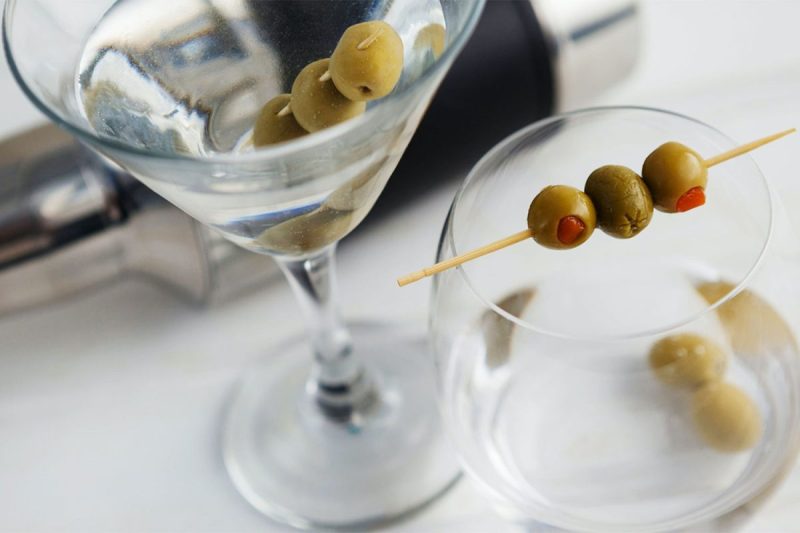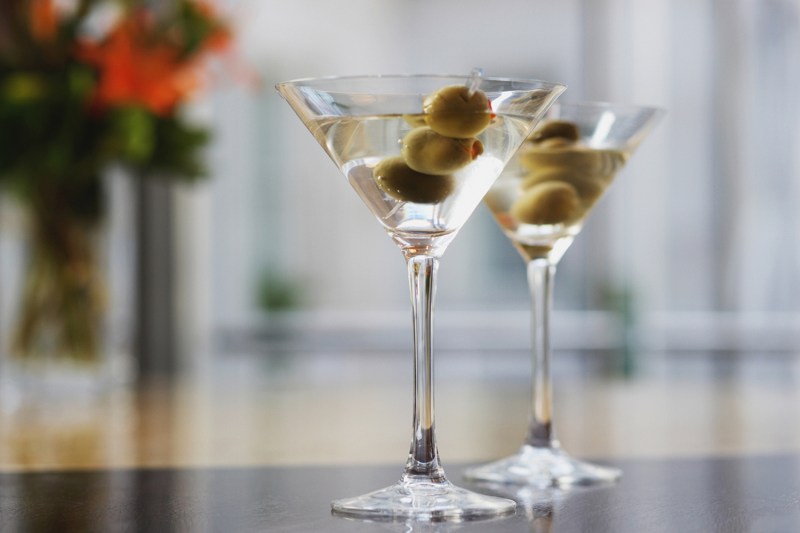If you’re not an avid cocktail (or martini specifically) drinker, you might not realize that the martini is much more complex than it seems. At its simplest, the martini is a mixed drink made with gin and vermouth and is often garnished with a lemon twist or an olive. Many drinkers don’t go much beyond this classic iteration. But with a few simple changes in ingredients, you can create a handful of different types of martinis.
It might seem simple, but since the classic martini is made with gin, if you’re the type of drinker who prefers the drink with vodka, then you’re not drinking a martini. Instead, you’re drinking a vodka martini. You don’t even have to change any of the other ingredients to make a completely different drink.
What’s the martini’s history?

Like with many classic cocktails, there are a handful of stories about the martini’s genesis. One popular story takes us back to 1911. This is when an Italian-born bartender named Martini di Arma di Taggia is believed to have created the martini at the Knickerbocker Hotel in New York City for illustrious business tycoon John D. Rockefeller. This drink was made with dry gin, dry vermouth, bitters, a lemon peel, and an olive. Since it was imbibed by America’s first billionaire, it quickly became a popular drink among the city’s elite.
What different kinds of martinis are there?

On top of the classic martini and vodka martini, there are a handful of well-known versions. But there are also countless classic and contemporary takes on the drink, so it’s difficult to pinpoint an exact number. If you’re looking for a true offshoot of the original, there’s only a few that you need to know.
What is the most popular martini?

When it comes to popularity, there’s no disputing the classic gin-based martini. What’s better than the original? Pine, herbal, vermouth, and a salty olive. What’s not to love? The vodka martini is likely a close second when it comes to popularity.
What are the different ways to order a martini?

If you’re ordering a classic martini (or one of the offshoots), there are a handful of ways to order it. You can ask for a martini, and you’ll get a classic gin-based drink. You can also ask for a vodka martini, and the bartender will swap out the gin for vodka. A dirty martini gets its cloudy, salty flavor from the use of olive brine. Lastly, a dry martini has less (or just a splash) of vermouth and more gin or vodka.
The different types of martinis

Now that we’ve learned a little bit about the martini and its history, it’s time to take a deep dive into the most popular different types of martinis. Also, while countless other varieties resemble the iconic drink, below you’ll find the most similar, classic variations. Keep scrolling to find step-by-step directions to make each.
Martini

What you need to make a martini
- 3 ounces of London dry gin
- 1/2 ounce of dry vermouth
The martini recipe steps
1. Add ice to a mixing glass.
2. Pour in the gin and vermouth.
3. Stir gently to combine.
4. Strain into a chilled martini glass.
5. Garnish with an olive.
Vodka martini

What you need to make a vodka martini
- 3 ounces of vodka
- 1/2 ounce of dry vermouth
The vodka martini recipe steps
1. Add ice to a mixing glass.
2. Pour in the vodka and vermouth.
3. Stir gently to combine.
4. Strain into a chilled martini glass.
5. Garnish with a lemon twist.
Dirty martini

What you need to make a dirty martini
- 2 1/2 ounces of gin
- 1/2 ounce of dry vermouth
- 1/2 ounce of olive juice or brine
The dirty martini recipe steps
1. Add ice to a shaker.
2. Pour in the gin, dry vermouth, and olive brine.
3. Shake vigorously to combine.
4. Strain into a martini glass.
5. Garnish with 2-3 olives on a skewer.
Dry martini

What you need to make a dry martini
- 3 1/2 ounces of gin
- 1/4 ounce of dry vermouth
The dry martini recipe steps
1. Add ice to a mixing glass.
2. Pour in the gin and dry vermouth,
3. Stir gently to combine.
4. Strain into a chilled martini glass.
5. Garnish with an olive.
Gibson

What you need to make a Gibson
- 3 ounces of gin
- 1/2 ounce of dry vermouth
- Cocktail onion
The Gibson recipe steps
1. Add ice to a mixing glass.
2. Pour in the gin and vermouth.
3. Stir gently to combine.
4. Strain into a chilled martini glass.
5. Garnish with a cocktail onion.
Vesper

What you need to make a Vesper
- 2 ounces of gin
- 1/2 ounce of vodka
- 1/4 ounce of Lillet Blonde
The Vesper recipe steps
1. Add ice to a shaker.
2. Pour in the gin, vodka, and Lillet Blonde.
3. Shake vigorously to combine.
4. Strain into a chilled coupe glass.
5. Garnish with a lemon twist.
Martinez

What you need to make a Martinez
- 2 ounces of gin
- 1/2 ounce of sweet vermouth
- 1/4 ounce of maraschino liqueur
- 2-3 dashes of Angostura bitters
The Martinez recipe steps
1. Add ice to a mixing glass.
2. Pour in the gin, sweet vermouth, maraschino liqueur, and
3. Stir gently to combine.
4. Strain into a chilled coupe or martini glass.
5. Garnish with an orange peel.




